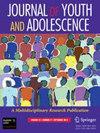父母参与与学业成就的亲子一致性与不一致性:越多越好?
IF 3.6
1区 心理学
Q1 PSYCHOLOGY, DEVELOPMENTAL
引用次数: 0
摘要
父母和青少年对父母参与的看法可能不同,但大多数研究依赖于单一的信息来源,可能忽视了重要的差异。本研究利用来自东亚、拉丁美洲和欧洲13个经济体的89,448名15岁青少年(50.3%为女性)及其父母(78.2%为女性)的数据,考察了父母参与两种形式(学业社会化和一般参与)的父母-青少年一致性和不一致性如何与青少年的学业成就相关。多水平多项式回归和响应面分析显示,在中等程度的父母参与水平上,父母与青少年一致时,青少年得分较高。然而,这种模式因文化和性别而异,东亚女孩在高水平的父母参与下获得更高的学业成绩。相比之下,父母和青少年关于父母参与的报告之间的不匹配始终与不同地区和性别的学习成绩较低有关。这些发现强调了父母参与的程度和一致性都很重要,文化和性别背景决定了父母参与如何影响学业成功。本文章由计算机程序翻译,如有差异,请以英文原文为准。
Parent-Adolescent Congruence and Incongruence in Parental Involvement and Academic Achievement: The More, the Better?
Parents and adolescents can differ in their perceptions of parental involvement, yet most research relies on a single informant, potentially overlooking important discrepancies. Using data from 89,448 fifteen-year-olds (50.3% female) and their parents (78.2% female) across 13 economies in East Asia, Latin America, and Europe, this study examined how parent-adolescent congruence and incongruence in two forms of parental involvement-academic socialization and general involvement-were associated with adolescents' academic achievement. Multilevel polynomial regression and response surface analyses revealed a significant curvilinear relation, suggesting that adolescents achieved higher scores when both parents and adolescents were congruent at moderate levels of parental involvement. However, this pattern varied by culture and gender, with East Asian girls achieving higher academic performance from congruence at high levels of parental involvement. In contrast, mismatches between parent and adolescent reports on parental involvement were consistently linked to lower academic performance across regions and genders. These findings underscore that both the degree and alignment of parental involvement matter and that cultural and gender contexts shape how parental involvement influences academic success.
求助全文
通过发布文献求助,成功后即可免费获取论文全文。
去求助
来源期刊

Journal of Youth and Adolescence
PSYCHOLOGY, DEVELOPMENTAL-
CiteScore
8.20
自引率
6.10%
发文量
155
期刊介绍:
Journal of Youth and Adolescence provides a single, high-level medium of communication for psychologists, psychiatrists, biologists, criminologists, educators, and researchers in many other allied disciplines who address the subject of youth and adolescence. The journal publishes quantitative analyses, theoretical papers, and comprehensive review articles. The journal especially welcomes empirically rigorous papers that take policy implications seriously. Research need not have been designed to address policy needs, but manuscripts must address implications for the manner society formally (e.g., through laws, policies or regulations) or informally (e.g., through parents, peers, and social institutions) responds to the period of youth and adolescence.
 求助内容:
求助内容: 应助结果提醒方式:
应助结果提醒方式:


